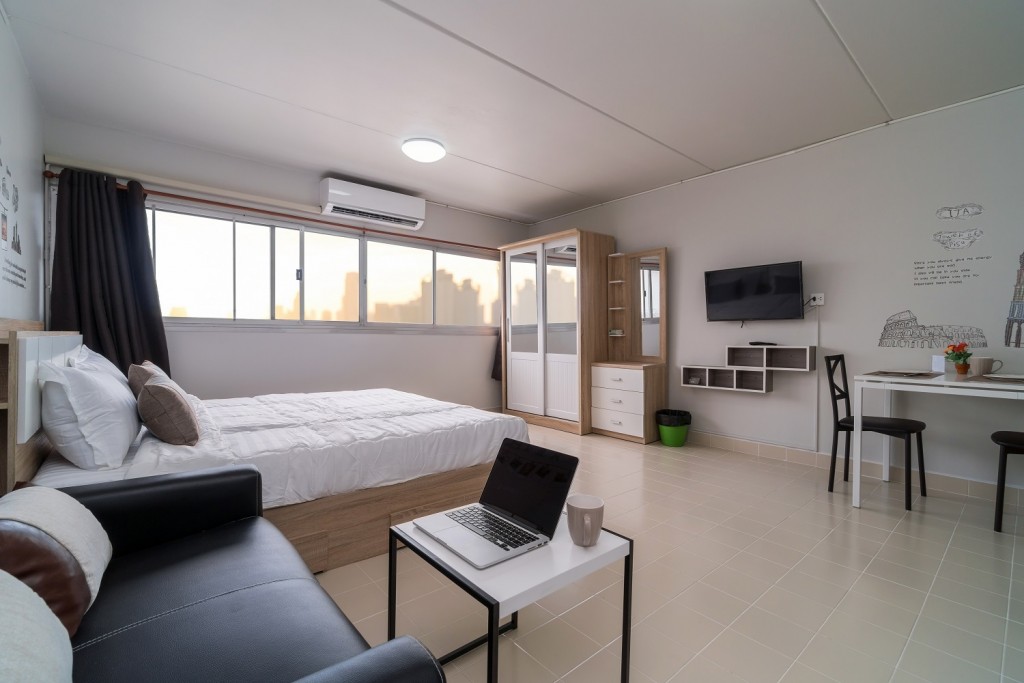Co-living, as a modern, urban type of accommodation with shared living spaces, might be the next rage in the property industry. It has been gaining traction, particularly in large, international, expensive cities overseas, according to Knight Frank Malaysia.
This form of residential living is especially popular with millennials and Generation Z who have grown up with technology, social media and the sharing economy.
The recent Commercial Real Estate Investment Sentiment Survey 2020 report revealed that 58% of the respondents are exploring or planning to develop co-living and student accommodations, said Knight Frank in a press release.
As homes in Kuala Lumpur have become more expensive, co-living addresses some of the issues around living in the centre of the city.
It offers an agile lifestyle living with no worry about a mortgage, said Knight Frank Malaysia executive director for capital markets James Buckley.
“Many singles, students or young professional workers find conventional new apartments out of their reach because of high rents, deposits and furnishing costs, and co-living can be a more attractive option,” he said.
However, he added that the rate of co-living occupancy would be impacted due to the Covid-19 pandemic, as social distancing is difficult when individuals are sharing a home with others, especially strangers or transient renters.
Even so, Buckley believed that the drop in occupancy would be short-lived once the Covid-19 crisis subsides, and there will be a growing interest in this sector.
“The requirement for human interaction remains deeply rooted although the new normal beyond the Covid-19 crisis is hard to predict,” said Knight Frank Malaysia executive director of research and consultancy Judy Ong.
Alternative Investment
| Co-living/ student accommodation | Co-working | Senior living / retirement home | Serviced suite / hotel suite | Theme park | |
| No plan to develop and explore | 42% | 53% | 46% | 44% | 82% |
| Exploring | 40% | 35% | 38% | 31% | 11% |
| Planning to develop | 18% | 12% | 16% | 25% | 7% |
Source: The Malaysia Commercial Real Estate Investment Sentiment Survey 2020
“With the safety and health of residents being high on the priority list of operators, hygiene of communal spaces is of utmost importance at all times.
“This pandemic may see developers who are exploring or planning to develop co-living accommodation to revisit the functionality of their co-living space in terms of the design and layout, in particular, communal areas and shared facilities,” Ong commented.
Buckley is also of the opinion that co-living does not really compete with conventional hotels. “Guests tend to stay at co-living apartments for a longer period of between three and six months, and the types of services and amenities offered are quite different to what a hotel provides.
“In Kuala Lumpur, the typical occupier is single and in their mid-twenties,” he said, adding that co-living is often very popular with single females who want a safe, clean and professionally run living experience.
Buckley further advised that walking distance from work or the proximity of the mass rapid transit (MRT) and light rail transit (LRT) stations are critical to success.
Some developers have converted residential apartment blocks by chopping up apartments to increase the number of units by six times, he said.
Given the oversupply of new office accommodation, some well-located grade B office buildings can also be repositioned into co-living spaces.
The challenge for investors, however, is that co-living is most in-demand in central locations which are typically more expensive. “But we do see some opportunities emerging, particularly in the Kuala Lumpur Old City Centre,” added Buckley.
There are also challenges for co-living operators to provide decent accommodation that comes with a high level of service, albeit at reasonable prices that are affordable to the younger and mobile workforce, who happen to be the primary target.
Moving forward, co-living presents an opportunity for key players to secure a first-mover advantage in this largely untapped market.
However, there is a need for developers and investors to critically evaluate the characteristics of their proposed developments amid prevailing market sentiments before venturing into this niche segment, taking into consideration the development, refurbishment and repurposing costs, where relevant.
Demand for better living conditions with proximity to rail transportation networks coupled with more innovative methods to house an ever-increasing urban population may boost the growth of the co-living sector.











































